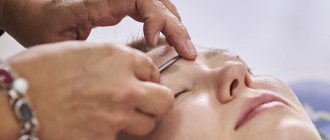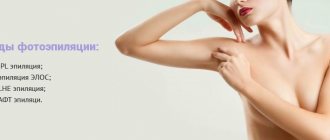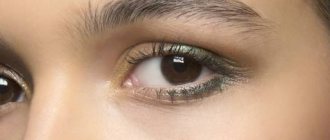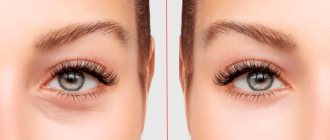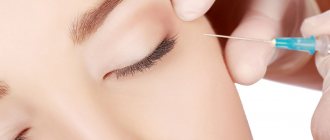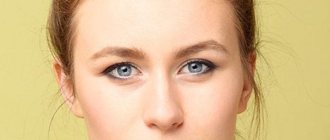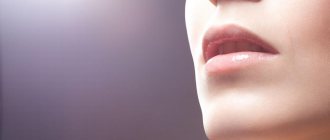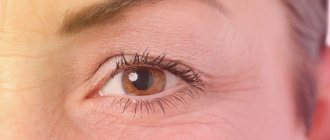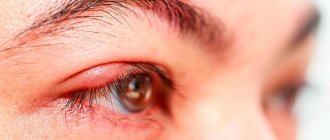It’s not for nothing that the eyes are called the mirror of the soul. The openness and directness of the gaze, the manner of reflecting emotions are the first to form the impression of the face of a stranger. Unfortunately, with age, the thin skin in this area changes: wrinkles appear, the upper eyelid begins to sag, the corners of the eyes droop, and dark circles and swelling appear underneath.
- Laser resurfacing
The look becomes heavy, gloomy and unfriendly, which adds an extra ten years to even the most well-groomed and pretty face. Specialists from the GALAXY Beauty Institute will tell you how to deal with drooping eyelids, which methods really work, and which methods will not be beneficial.
Causes of drooping eyelids
Sagging areas of the skin under the influence of congenital, external or age-related factors are called ptosis. The main causes of this condition are:
- natural aging, which reduces the production of elastin and collagen, which provide elasticity and tone to tissues;
- some diseases of the cardiovascular system;
- diabetes;
- genetic predisposition (for example, being Asian or certain congenital diseases);
- poor diet with a lot of salt, which retains fluid in the body;
- chronic fatigue due to insufficient night rest;
- hard physical labor;
- constant nervous tension;
- improper care of the eye area (use of aggressive products, incorrectly selected decorative cosmetics, insufficient cleansing of the skin after makeup before bedtime);
- frequent allergic reactions accompanied by swelling of the skin on the face;
- myopia, due to which a person involuntarily squints in order to better see distant objects.
In some cases, the administration of botulinum toxin may cause ptosis: when the drug spreads (diffusion) into neighboring muscle groups, the eyelid may sag. To avoid such situations, cosmetologists at the GALAXY Beauty Institute recommend contacting only trusted specialists in professional medical institutions.
Surgical methods for correcting eyelid ptosis
Surgery remains the only possible method of eliminating any age-related changes in the area around the eyes. Eyelid surgery is called blepharoplasty and involves restoring the natural texture of the skin. There are several types of this operation, and in each specific case the plastic surgeon selects individual tactics taking into account the patient’s personal desires, his anatomical and physiological characteristics.
Indications for blepharoplasty
Direct reasons for the procedure are:
- circles, bags, bruises around the eyes;
- drooping or widening of the outer corners of the eyes;
- drooping upper eyelid;
- the appearance of wrinkles around the eyes;
- development of the eyelid-buccal groove;
- deepening of the nasolacrimal groove;
- fatty hernias;
- the effect of a “tired” look;
- violation of the contour of the eyelids;
- blurred vision due to overhanging skin.
Upper eyelid surgery
An incision is made in the crease of the upper eyelid. During the operation, the surgeon removes fatty tissue or transfers it from problem areas to areas with insufficient volume: in the nasolacrimal grooves, in the folds between the cheek and eyelids, in the eyebrow area. This tactic allows you to even out the relief of the face and recreate the natural appearance of young skin. Upper eyelid blepharoplasty is performed under general anesthesia.
The procedure allows you to:
- remove excess skin;
- eliminate or redistribute excess fat tissue;
- “open” the eyes, eliminate the effect of a tired look;
- eliminate violations of the eyelid contour.
To solve a wider range of problems, the technique is often combined with canthoplasty - correction of the shape and height of the outer corner of the eye, and lifting the eyebrows or forehead. The scars after the intervention are hidden under the upper eyelid, which makes them completely invisible.
Upper and lower blepharoplasty (popularly “Circular”)
The procedure allows you to work simultaneously with the upper and lower eyelids. Like upper blepharoplasty, the procedure is performed under anesthesia, and incisions are made in the least visible places: the crease of the eyelid (upper blepharoplasty), along the lash line or from the inside of the eyelid.
The operation allows you to get rid of the most common aesthetic defects in the eye area in one operation. If necessary, plastic surgery is performed simultaneously with correction of other areas of the face, plastic surgery of the corners of the eyes and other interventions to make the face more harmonious. A correctly selected technique allows you to create a smooth texture of the skin under the eyes, eliminate bags and puffiness, and make your face more rested and fresh.
Ptosis of the eyelid - symptoms and treatment
Treatment of blepharoptosis can be either conservative, i.e. non-surgical, or surgical.
Conservative treatment
The symptoms of mild to moderate congenital ptosis may improve over time without ocular complications. Some types of neurogenic ptosis can also improve independently due to spontaneous regeneration of the oculomotor nerve during its paresis or due to remission of neurological pathology. Ptosis in myotonic dystrophy may require support of the upper eyelid with special glasses.
Some types of myogenic ptosis in myasthenia gravis and myasthenic syndrome respond well to drug therapy.
Nutrition correction has no effect on any type of ptosis.
Surgery
Most blepharoptosis requires surgical correction. In adults, the operation is usually performed on an outpatient basis under local anesthesia; in children, general anesthesia is required.
Surgery for minimal ptosis:
- conjunctival resection (truncation) of the Müller muscle
- Fasanella-Servat operation - excision of the conjunctiva, Müller muscle and the upper edge of the tarsal plate;
- plastic surgery of the levator aponeurosis.
Before surgery, a test with phenylephrine 2.5% is required. 10 minutes after instillation, the MRD is assessed: if it increases by more than 1.5 mm, the test is considered positive. This indicates the viability of the Müller muscle.
If the test is positive, then conjunctival resection of this muscle is recommended. Poor response to phenylephrine requires Fasanella-Servat surgery or levator aponeurosis surgery.
Surgery for moderate ptosis
In this situation, plastic surgery of the levator aponeurosis is recommended.
Surgery for severe ptosis
In such cases, as a rule, plastic surgery using a fascia lata graft is recommended to correct the position of the upper eyelid. The use of allogeneic materials (for example, silicone) is allowed, but long-term results are worse than when using your own tissues [1][2][4][5].
Postoperative complications
Intraoperative complications may include allergic reactions to local anesthetics such as lidocaine.
In the early postoperative period, significant tissue swelling usually occurs, and therefore some surgeons prefer to apply a pressure bandage for 48 hours. The most commonly observed are asymmetry, signs of hypo- and hypercorrection, but they can disappear on their own within 6-12 months after surgery. Also acceptable is slight lagophthalmos - the inability to completely close the eyelids. It goes away within 2-3 weeks.
Bleeding and infectious complications after surgical correction of blepharoptosis are rare. They can lead to keratopathy - damage to the cornea.
Achieving complete symmetry when correcting blepharoptosis is often an impossible task . The patient should be warned about this before the operation. There will always be residual asymmetry, but it will be most noticeable in the first month after surgery.
Overcorrection (excessive effect of surgery) is rare. It is difficult to unambiguously determine this complication in the early stages after surgery. If it is suspected, an independent eyelid massage is prescribed, starting from 4-5 days up to several months.
Postoperative keratitis in children has a fairly mild course, but in adults it is more severe - the use of artificial tears and special gels is required.
Late postoperative complications include persistent lagophthalmos, keratopathy and relapse of eyelid ptosis. For patients in whom signs of hypo- or hypercorrection persist for a long time, repeated intervention on the upper eyelid is indicated [1][3][8][9].
Non-surgical methods for correcting ptosis of the upper eyelid
On the Internet you can find a lot of different tips and methods that are designed to eliminate or at least reduce eyelid ptosis. Some of them actually have one effect or another, others are useless at best.
Laser resurfacing
The most pronounced effect of skin reduction and eyelid lifting is achieved by CO2 laser resurfacing. The procedure is performed under local anesthesia and the recovery period takes 6-7 days. It is possible to combine plastic surgery and laser resurfacing under one general anesthesia. A mandatory requirement during rehabilitation is long-term use (at least 6 months) of sunscreen.
Botulinum toxin injections
The introduction of drugs into the area of the edges of the eyebrows provides the so-called “flying eyebrows” effect, which simultaneously smoothes out the folds on the eyelids and makes the look more open and refreshed. However, such a measure is not suitable for every type of face, in some cases it weighs down the image and makes it unnatural.
Thread lifting
The technique involves introducing threads with notches under the skin, which tighten sagging areas and hold them in the desired position. Unfortunately, in the temporal region the tissues are not very dense, which makes fixation difficult and makes the effect of the procedure short-lived - only up to 3-4 months.
Contour plastic
It consists of injecting special fillers based on hyaluronic acid under the skin in the eye area. By filling the space, such drugs smooth out wrinkles and circles under the eyes, but they are ineffective against the overhanging eyelid. And the effect does not last long - up to 6 months.
Makeup
Properly selected decorative cosmetics and the ability to apply them correctly can disguise even quite complex defects on the face, for example, scars, excessive length or width of the nose, the shape and volume of cheekbones or lips. Unfortunately, such measures are ineffective in relation to the skin that appears on the eyes and can only visually reduce the fold or adjust the height of the outer corner of the eyes.
It is important to understand that these correction options only help in cases with minor defects and structural features. They are not able to eliminate serious congenital or age-related problems; only surgical intervention will help.
Magicstripes for impending eyelids: test drive
The effect of lifting an overhanging eyelid, like after blepharoplasty, with the help of Magicstripes - reality or a publicity stunt? Ira Kiseleva checks and shares her impressions.
When Olya T. was shown makeup for a drooping eyelid, I wrote a comment in the spirit of “everything is fine, but you should have seen my drooping eyelid...”. And now I have a chance to demonstrate it-) Because the crease of the eyelid lying on the eyelashes is the ideal initial data in order to understand what kind of animal this is - strips for its tightening.
Without stripes
What is this? Magicstripes are transparent silicone strips that are glued into the crease of the eyelid. The visual effect, according to manufacturers, is not inferior to blepharoplasty: the look becomes open, and the overall appearance becomes fresher and more youthful. Pros: no surgical intervention. The disadvantages arise from the “sticker” form factor - this is a temporary measure.
They also promise that the strips are invisible, absolutely comfortable (do not irritate the skin of the eyelids and are suitable for sensitive eyes), last all day and can be applied to makeup. Available in three versions: thin S, medium M and large L. The choice depends on the size of the eyes, the degree of drooping of the eyelid and the desired effect. It is also clarified that thin strips are also suitable for correcting symptoms of fatigue and swelling, including the “normal” eyelid.
How to use? The first point in the how to is “degrease the skin of the eyelids.” A facial lotion or micellar lotion is suitable for this - the main thing is that the product is not oily. (I used Tony Moly toner for problem skin for this purpose - it contains alcohol, but it does not irritate the eyes). Next you need to carefully pick up the strip and separate it from the foil. Then tilt your head back a little and, looking in the mirror in front of you and holding the eyelid with the fingers of your other hand, glue it on.
Manufacturers honestly warn that it may not work right away, and suggest experimenting with the location of the strip on the eyelid. In this case, it is better to take a new one every time. But from my own experience I will say that the same one can withstand 3-4 re-gluings - quite enough for training. And you can take a new one when you already find the G point and determine the best option. Where to glue it matters, because here the range is possible from the promised “fresh look” to the rounded eyes “what? alien invasion?!!” After all the manipulations, make-up (if you decide to do it after the photos below).
To remove the strip, you need to pry up its tip and peel it off (it is important not to pull or tug sharply). There are a lot of tutorials on the Magicstripes website and not only this one - detailed comments in Russian:
Magicstripes thin, size S
Magicstripes S
Without stripes
With stripes size S
Since I have a decent amount of drooping eyelid, I didn’t have high hopes for these strips. It turned out that it was in vain - they can have almost the same effect as stripes of size M. The big plus of S-ok is that they are the most inconspicuous of all and, perhaps, quite suitable for the situation “first date - table for two - eye to eye” . And yes, they are not felt at all on the eyelids.
True, they are so thin that it is difficult to peel them off from the foil. The barely pryed tip is immediately wrapped inward and glued tightly to the “body” of the strip. It is no longer suitable for use. Therefore, if your nails are very short or have a thick layer of coating on them, tweezers for eyebrow correction will help you. Another point - if the skin is prone to oiliness, due to the “modest” gluing area, the strips may not last in place all day. (It took me about 5 hours).
Magicstripes, size M
Magicstripes M Without stripes
With stripes size M
The m-ki are located differently on the blister, and it is convenient to peel them off by bending them along the line where the two strips join. So you can do without additional tools. The tutorial shows that the strips need to be glued higher than what I have in these photos. I tried it. Yes, this way the eyelid lifting effect is more pronounced. But I absolutely don’t like that the eyes look more rounded than they actually are. And in this situation everything is fine: it’s still me, but with my eyes slightly open.
The sensations are reminiscent of Yulina from Dior applied arrows: at first it seems like something foreign - well, well, Louboutins, you blink three or four times - but no, Nike sneakers-). And they hold strong and for a long time: I wore them for almost 12 hours.
Magicstripes wide, size L
Without stripes
They give the most noticeable results. But - you can’t see it from the photo - they don’t fit me in size. This is most likely an option for girls with the eyes of Disney princesses - half-length. In terms of other technical characteristics, everything is the same as the middle stripes. Unless these are still noticeable.
Eventually. A global disadvantage identified during the test drive and operation is that “Magics” are not friendly with makeup. All the shadows that I tried to apply on top (by driving in, with a finger, with a brush, different textures and shades) seem to reveal them. With open eyes - nothing critical, but we blink. And sometimes you need to languidly close your eyelids (on the same date).
But if you want to draw arrows, then Magicstripes are just a godsend! When the eyelid is lifted, the line of eyeliner looks solid when the eye is open (and not this disgrace: the inner corner-fold of skin-tail). Plus, nothing is imprinted anywhere (which always happens to me, regardless of the durability of the eyeliner).
Should Magicstripes be compared to blepharoplasty? Hmm-hmm. Well, approximately to the same extent that a push-up bra is an alternative to mammoplasty. For me, stripes are more of a one-time/temporary story about “I didn’t get enough sleep,” or a meeting/shoot when I need to look good, or I was impatient to do the same arrows. Then, yes, as Masha wrote, “I took it, glued it and it was beautiful.” That's why I love them.
Price: 1500 rub. for a set for a month (64 strips) in the official online store.
What do you think about these stickers? Have you used it? And what are your impressions?
Methods that don't work
Folk and home methods, unfortunately, cannot in any way significantly affect the manifestations of ptosis.
- Massage and gymnastics. Positive effects include only stimulation of blood circulation in the periorbital area. One of the risks is injury to thin skin, which leads to an increase in wrinkles and the appearance of spider veins under the eyes.
- Various serums and creams. They may slightly moisturize the skin, but they can cause more harm: cause allergies, blurred vision if it comes into contact with the eyes, and increase swelling.
- Face fitness. It is an excellent exercise for vision, but in no way affects the tissue surrounding the eyes.
- Taping. A method designed to lift overhanging areas of skin using special adhesive strips. It has minimal effect on gravitational ptosis, but often provokes redness, itching and burning in the area of use.
Plastic surgeons at the GALAXY Beauty Institute strongly recommend not to experiment with your health and seek help from licensed specialists. We work only with effective, proven methods, use certified drugs and carefully follow safety precautions when carrying out any manipulations. Our doctors will select for you the optimal method for correcting a drooping upper eyelid, conduct a comprehensive diagnosis and help restore your youthful appearance in the shortest possible time.
